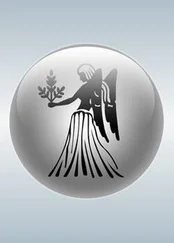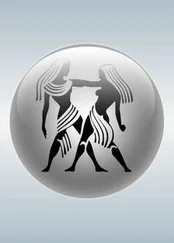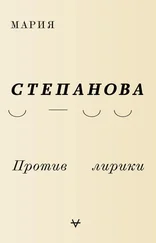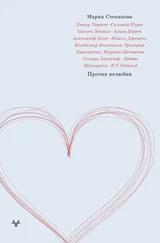On October 18, 1911, the poet Andrei Bely wrote to Alexander Blok: “You mustn’t think I’ve become a chernosotenets [member of the ultranationalist and anti-Semitic ‘Black Hundreds’ movement]. But through both city noise and rural dreaminess I can hear louder and louder the future movement of race.” Blok was also listening to the underground rumblings: he was preoccupied with the relationship between Aryanism and Jewry, and the difference between yids (dirty, illiterate, incomprehensible) and the more acceptable Jews . Ten days later he wrote in his diary: “Had tea at Kvisisan this evening, Pyast, me, and Mandelstam (the eternal).” The shadow of the half-mentioned Eternal Jew stretches forward into the 1920s, when an offended fellow poet wrote an article in which Mandelstam is mentioned as a Jew (“hungry wanderer, Ahasverus”) and then given the epithet of “the Khlestakov of Russian poetry,” after Gogol’s comic impostor. As predictable as a menu: the mention of tribe and race as a starter, followed by the main course of personal slur. In Blok’s own words, from notes in his diary, written many years later, when he had more time for Mandelstam’s poetry: “You gradually get used to him, the jewboy hides from view and you can see the artist.”
In order to get noticed, the “jewboy,” whoever he was, had to hide himself away: purge and recast himself, improve himself and destroy all traces of family, race, or tribe, or adherence to place. In 1904 Thomas Mann wrote approvingly about the family of his future wife: “One has no thought of Jewishness; in regard to these people, one senses only culture.”
It was understood that belonging wholeheartedly to the world of culture meant rejecting your Jewishness. To insist on Jewishness seemed almost old-fashioned, “as if nations still existed after the fall of the Roman Empire, and it was possible to build a culture on the raw idea of nation” wrote Boris Pasternak. It’s worth noting that in all the general excitement about national heritage and folk arts and crafts, the flourishing of the Viennese movement in art and the Abramtsevo artists’ colony, the patterns and the firebirds, there is only one national identity left out of the party. At the turn of the century, enlightened, educated, secular European Jews felt no kinship with their relatives in the galut , with their accents, their chickens, their cozy inseparableness — and the cumbersome load of their religion. No lyric memoirs — for those who had the opportunity or the inclination to assimilate, everything that reminded them of the musk of Judaism was perceived as ugly atavism, the fish’s tail dragging the lucky survivor ashore. This lasted for decades: in Isaiah Berlin’s Personal Impressions , he describes a meeting with Pasternak in 1945: “He was unwilling to discuss the subject — he was not embarrassed by it, but he disliked it: he wished the Jews to assimilate, to disappear as a people. […] If I mentioned Jews or Palestine, this, I observed, caused him visible distress.”
The children of the turn of the century had three choices before them, and they all looked much the same. Revolution, assimilation and Zionism: there they were, like three allegorical figures spaced apart on the colonnade of a deserted building. Herzl’s dream of a Jewish state, conceived only a short while before, had not yet taken full shape. Yiddish or Hebrew? The choice of language was the subject of many heated discussions, and even back then Hebrew was the preferred choice: the language of denial of the current “self” (victim, exile, refugee) in favor of the ancient and original “self.” Assimilation, the voluntary immersion into the powerful river of another culture, happened gradually and naturally with a certain level of education and wealth. The archaic religiosity of parents faded before the eyes, and revolution (with its obligatory equality and brotherhood) was even more tempting because it knocked the barriers of nationality and social standing off the table with one sweep of the hand. On October 17, 1905, my great-grandmother joined street protests, arm-in-arm with half acquaintances and strangers, each of whom felt like a family member — and it felt natural because they had come together to build a new and better world, based on the stable foundations of reason and justice. This new sense of community had something in common with traveling: you suddenly found yourself a thousand miles from everything you knew and, as if floating on air, you felt yourself to be better than before, brighter, more beautiful, capable of greater depths of both good and evil. The leaflets she handed out in the town’s barracks talked of a reality very far from her own experiences in childhood and early womanhood, and so it was even more important to communicate their message to others. It was, even to her ears, a new message — those concepts had not existed in the language of her household.
The other thing I noticed while reading the postcards, which danced back and forth between 1907 and 1908, was the warm, unquestioning sympathy the correspondence radiated. Alongside this warmth was the very thing an external world noted and attributed to us : the bonds of family, the inseparable clan, the continual care for every cell of the living organism, which drew into itself family, friends, relatives, acquaintances, the acquaintances of acquaintances. This was how Jews were represented in jokes and on cheap broadsheets — they knew their kind, they helped their own, they supported each other. There were a lot of them, and they kept to themselves. It’s hardly surprising when you realize the level of loneliness they felt, the wasteland surrounding them — these people who had taken a tentative step away from tradition were outsiders, with nothing and no one, apart from themselves.
Where’s Katya? Fanya is in Naples; I haven’t got Vera’s address, but Fanya’s is below. Ida Shlyummer was asking after you. I’m sending Fanya’s address again. Did you see your family? They wanted to send a telegram. If you go to Lausanne please give my best wishes to the Vigdorchik sisters.
What looks from outside like a comic scrabbling (soon to be captured in countless caricatures of Jews, like cockroaches, skittering away into nooks and crannies — fetch the insect powder!) is in fact the safety net of recognition and familiarity under the high wire. Even this becomes tiresome — not just for those looking on, but for the Jews themselves. The logic of assimilation, with its belief in progress and its basis in the sentiment that “not everyone will be taken into the future,” required of people that they admit (in their heart of hearts) that not all Jews are alike. So the enlightened residents of Vienna suffered terribly at the inpouring of their Eastern kin, with their mispronunciations, their inability to acclimatize to city life; so the secular inhabitants of Odessa took against the new Rabbi, brought from Lithuania, with his exalted ways and silly strictures.
*
Proust’s narrator observes with curiosity the eccentricities of his friend Bloch, a caricature of a Jew, armed with a host of carefully chosen mannerisms (like that other stereotypical character, the gay Baron de Charlus). One of his traits is a declarative anti-Semitism, loud and affected diatribes against the excessive numbers of Jews, quite literally everywhere, with their opinions and their noses!
One day when we were sitting on the sands, Saint-Loup and I, we heard issuing from a canvas tent against which we were leaning a torrent of imprecation against the swarm of Israelites that infested Balbec. “You can’t go a yard without meeting them,” said the voice. “I am not in principle irremediably hostile to the Jewish nation, but here there is a plethora of them. You hear nothing but, ‘I thay, Apraham, I’ve chust theen Chacop.’ You would think you were in the Rue d’Abou-kir.” The man who thus inveighed against Israel emerged at last from the tent; we raised our eyes to behold this anti-Semite. It was my old friend Bloch.
Читать дальше











